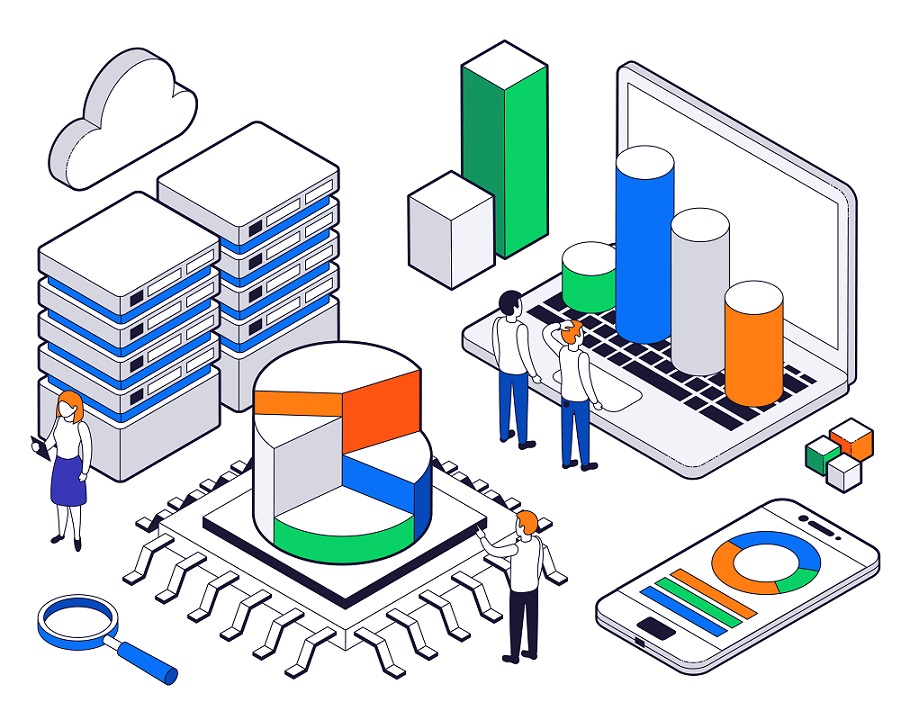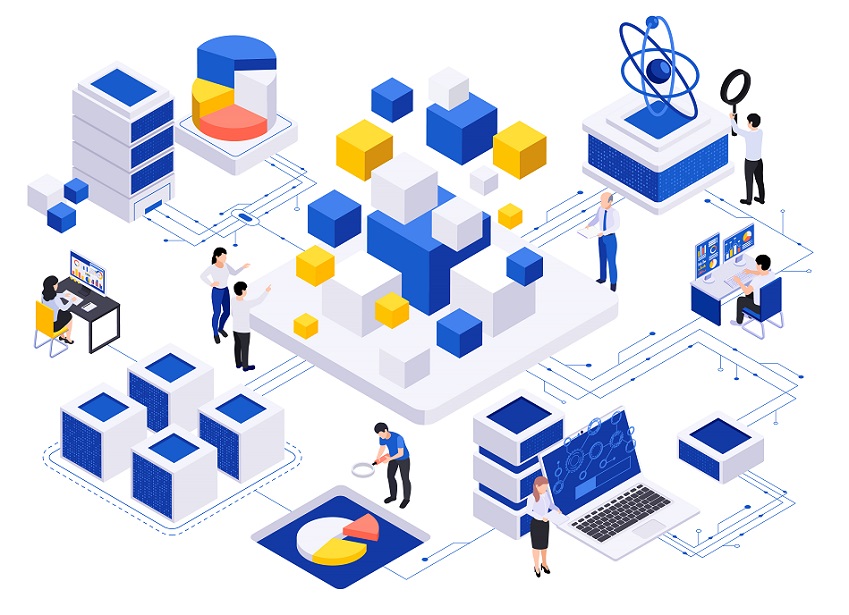Best Practices for Building a Robust Data Lake
In today’s data-driven world, organizations are constantly generating and collecting vast amounts of data from various sources, including databases, applications, sensors, and social media. However, effectively managing and extracting valuable insights from this deluge of data can be a daunting challenge. This is where data lakes come into play, offering a centralized and scalable repository for storing and analysing large volumes of structured, semi-structured, and unstructured data.
A well-designed data lake empowers organizations to consolidate their data assets, enabling data scientists, analysts, and decision-makers to access and analyse data from multiple sources seamlessly. By leveraging advanced analytics, machine learning, and artificial intelligence techniques, organizations can uncover hidden patterns, correlations, and insights, driving informed decision-making and gaining a competitive edge.

To unlock the full potential of data lakes, it is crucial to follow best practices that ensure data quality, governance, security, and scalability. This comprehensive guide will explore the key best practices for building a robust data lake, covering data architecture, ingestion, processing, governance, and scalability considerations. By implementing these best practices, organizations can harness the power of their data and drive innovation, efficiency, and growth.
Define Your Data Architecture
The foundation of a successful data lake lies in a well-defined data architecture that aligns with your organization’s specific needs and requirements. Before embarking on the journey of building a data lake, it is essential to assess your existing data sources, formats, and volumes, as well as your future data growth projections.
Determine whether an on-premises, cloud-based, or hybrid data lake architecture is most suitable for your organization, considering factors such as scalability, cost, and compliance requirements. Cloud-based data lakes offer advantages like elastic scalability, reduced infrastructure costs, and seamless integration with cloud-based analytics services.
Carefully map out the data ingestion and processing pipelines, ensuring that you can efficiently ingest data from various sources, including databases, applications, IoT devices, and external sources. Define the data transformation and enrichment processes required to convert raw data into a format suitable for analysis and decision-making.

Establish robust data governance and security policies from the outset. Define data ownership, access controls, and data quality standards to maintain data integrity and ensure compliance with regulatory requirements. Implement data lineage and provenance tracking to enable auditing and traceability of data transformations.
By defining a comprehensive data architecture upfront, organizations can lay a solid foundation for their data lake, enabling efficient data management, processing, and analysis while ensuring scalability, security, and governance.
Implement Robust Data Ingestion
A robust data ingestion process is crucial for ensuring the seamless flow of data into your data lake. To maximize the value of your data lake, it is essential to support a wide range of data formats and sources, including structured data from databases, semi-structured data from log files or XML, and unstructured data such as emails, documents, and social media feeds.
Automate data ingestion processes to minimize manual intervention and ensure timely and consistent data ingestion. Leverage data ingestion tools and frameworks that can handle large volumes of data, both in batch and streaming modes. This will enable you to capture and process real-time data streams from sources like IoT devices, social media, and application logs.
Implement data quality checks and validation rules during the ingestion process to ensure data integrity and accuracy. This includes handling missing or corrupt data, removing duplicates, and enforcing data format and schema consistency. By maintaining high data quality from the outset, you can enhance the reliability of your downstream analytics and reporting processes.
Consider implementing data catalog and metadata management practices to keep track of your data assets and facilitate data discovery and understanding. Metadata can provide valuable information about data sources, formats, schemas, and lineage, enabling better data governance and decision-making.
By implementing robust data ingestion processes, organizations can ensure a steady and reliable flow of high-quality data into their data lake, laying the foundation for accurate and insightful data analysis.
Optimize Data Processing and Analytics
Once data is ingested into your data lake, it is crucial to leverage the right tools and frameworks to process and analyse this data effectively. Embrace big data processing frameworks like Apache Spark, Hadoop, and their associated ecosystems to handle large-scale data processing and analytics workloads.

Implement efficient data transformation and enrichment processes to convert raw data into a format suitable for analysis. This may involve cleaning, normalizing, and aggregating data from multiple sources, as well as applying business rules and data quality checks. Leverage data processing engines and libraries that support parallel and distributed processing to accelerate these transformation tasks.
Enable both real-time and batch data processing capabilities within your data lake architecture. Real-time data processing is essential for applications that require immediate insights and decision-making, such as fraud detection, IoT monitoring, or real-time personalization. Batch processing, on the other hand, is suitable for more complex analytical workloads and historical data analysis.
Integrate machine learning and artificial intelligence capabilities into your data lake to unlock advanced analytics and predictive modeling. Leverage tools and frameworks like Apache Spark MLlib, TensorFlow, or Amazon SageMaker to build, train, and deploy machine learning models on your data lake data.
Support ad-hoc querying and data exploration capabilities to enable self-service analytics and data discovery. Provide intuitive interfaces and tools that allow data analysts, scientists, and business users to explore and analyze data without relying on extensive technical expertise.
By optimizing data processing and analytics within your data lake, you can unlock the full potential of your data assets, enabling data-driven decision-making, predictive analytics, and the development of innovative data-driven products and services.
Establish Data Governance and Security
Data governance and security are critical components of a robust data lake architecture. Implementing proper governance and security measures ensures data integrity, privacy, and compliance with relevant regulations, such as GDPR, HIPAA, or industry-specific standards.
Define clear data access controls and permissions, ensuring that only authorized individuals or systems can access sensitive or confidential data. Implement role-based access controls and data masking techniques to protect sensitive information from unauthorized access or accidental exposure.
Maintain data lineage and provenance by tracking the origin, transformations, and movements of data within the data lake. This information is essential for auditing purposes, troubleshooting issues, and ensuring data traceability and accountability.
Monitor and audit data usage and access patterns to detect and prevent any potential data breaches or misuse. Implement logging and alerting mechanisms to receive timely notifications of any suspicious activities or security incidents.
Ensure data privacy and compliance by implementing data encryption and secure communication channels. Encrypt data at rest and in transit and leverage secure protocols like SSL/TLS for data transmission. Additionally, regularly review and update your security measures to address emerging threats and comply with evolving regulations.
By establishing robust data governance and security practices, organizations can maintain the integrity, confidentiality, and reliability of their data assets, fostering trust and enabling data-driven decision-making with confidence.
Enable Scalability and High Availability
As data volumes continue to grow exponentially, it is crucial to design a scalable and flexible data lake architecture that can accommodate increasing data and workload demands without compromising performance or availability.
Leverage cloud-based or distributed storage solutions, such as object storage services (e.g., Amazon S3, Azure Blob Storage) or distributed file systems (e.g., Hadoop Distributed File System), to enable seamless scalability and high availability of your data lake storage.
Implement load balancing and failover mechanisms to ensure high availability and fault tolerance of your data processing and analytics components. Utilize container orchestration platforms like Kubernetes or Apache Mesos to manage and scale your computing resources dynamically.
Automate scaling and resource provisioning processes to ensure that your data lake can adapt to fluctuating workloads and resource demands. Leverage auto-scaling capabilities provided by cloud platforms or containerization tools to automatically scale resources up or down based on predefined metrics and thresholds.
By enabling scalability and high availability, organizations can future-proof their data lake architecture, ensuring that it can handle growing data volumes and workloads while maintaining reliable and consistent performance.
Conclusion
Building a robust and effective data lake is essential for organizations seeking to unlock the full potential of their data assets. By following the best practices outlined in this guide, including defining a comprehensive data architecture, implementing robust data ingestion and processing, establishing data governance and security, and enabling scalability and high availability, you can harness the power of your data to drive innovation, make informed decisions, and gain a competitive edge in today’s data-driven landscape.
